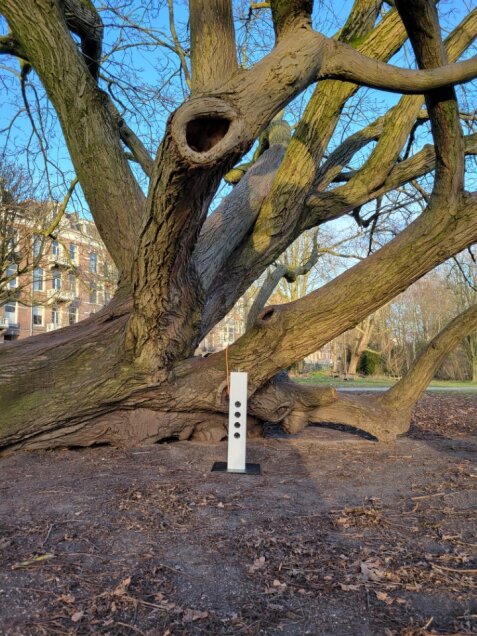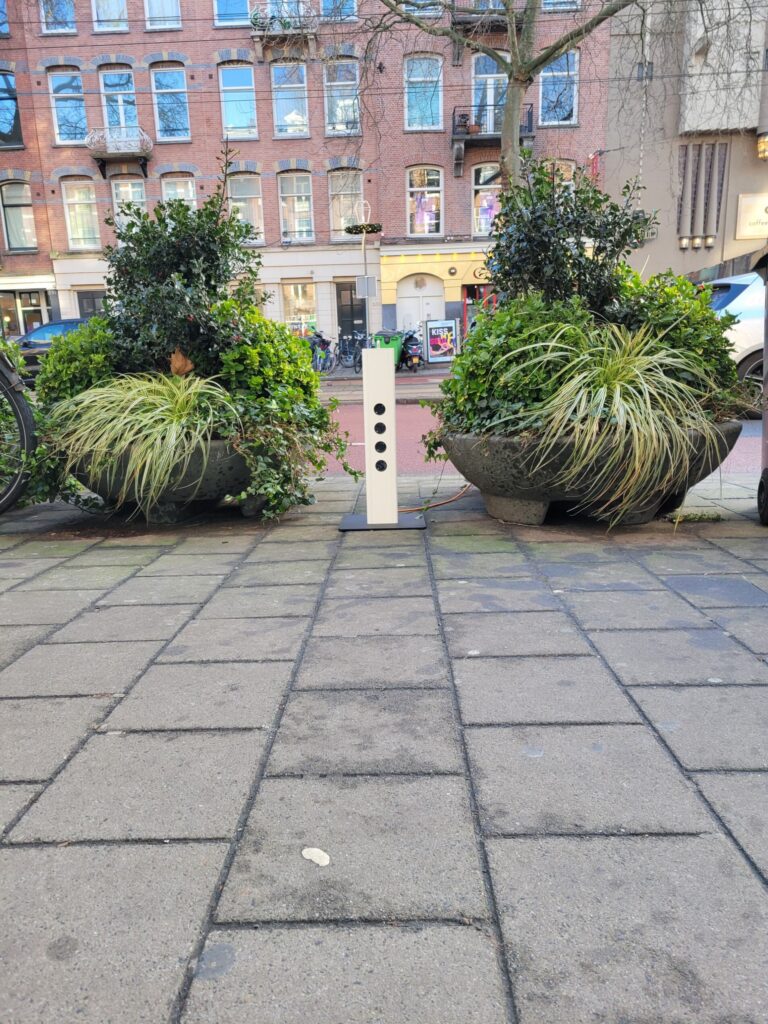How do people react when they get exposed to an object that they normally would not expect in this environment?
The idea was to see how people react to the object being placed where it normally does not belong. This can be applied to everything, trying to break the norm, and gathering input through the method (e.g., observing people’s reactions or asking them questions afterwards). This method is linked to the method of creating provocatypes, although we decided to not call it so, as we did not use a prototype but an object that was already real and had a specific use. It can also be combined with other methods to make the results even more tangible.
Aim of the method:
For the start of our project (bringing a new understanding of the electric grid), we decided to test how people would react to seeing an indoor outlet in outside locations like the street or the park.
How does it work?
Placing power outlets in various locations around the city. For instance, at the tram stop, the subway entrance, and in a park. Additionally, walking around with the power outlet through the streets.
Duration
Minimum 3 hours. If possible, do it on different days to see if there are any differences.
Materials
Power outlet, bags to protect the plug, cell phones for taking photos and recording, a notepad for taking notes.
Participants
Choose areas with high foot traffic.
What data can you collect?
Pros and cons
Advantages
Disadvantages
Results
The people walking in street locations (tram stop and metro entrance) did not pay much attention to the power outlet; some did not even notice it. This was because they were walking while looking at their phones or were in a hurry. However, when we walked with the power outlet, people paid more attention to it.
On the contrary, in the park, people walked without their phones and were more attentive to their surroundings. We placed the power outlet next to a tree, between two benches, and in front of a monument. People stopped for a few seconds to observe the power outlet.
It is worth noting that we were located near the power outlet, which allowed us to observe the gestures and reactions of the people.
Related methods
Josefina Vizcarra Meza, Srushti Shetty, Nelson Gutjahr, Maria Barbulovic

